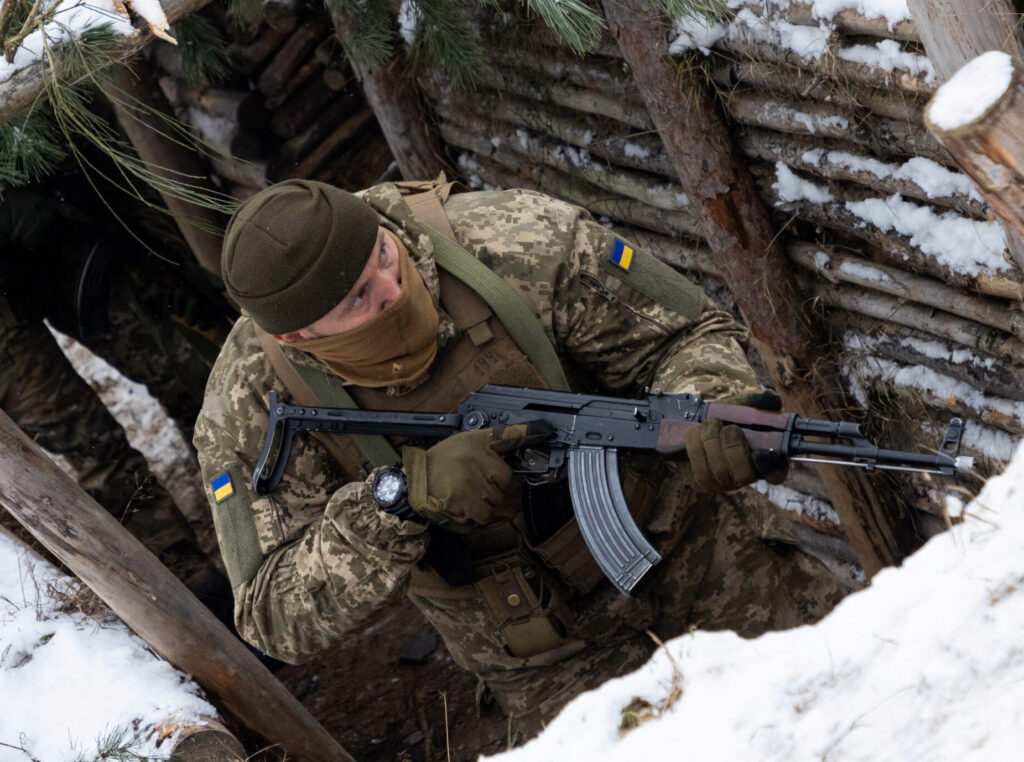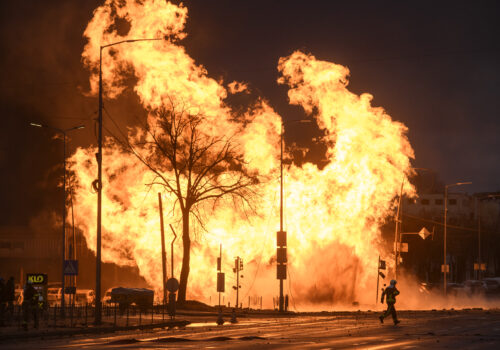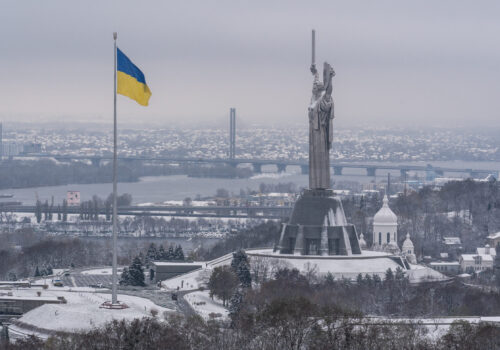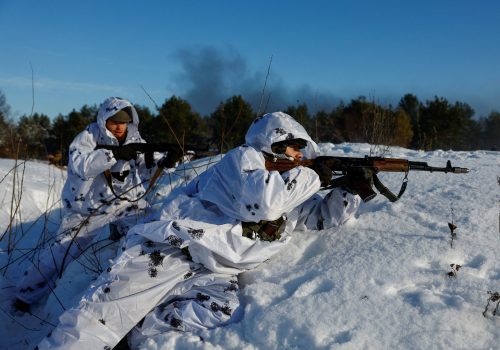As Russia’s full-scale invasion approaches the two-year mark, it is vital for Ukraine’s military and political leadership to properly digest the lessons of 2022 and 2023.
The most important conclusion to draw from the past two years of fighting is the dominance of defensive warfare over offensive operations. This has been demonstrated again and again, beginning with the failure of Russia’s initial blitzkrieg in the first month of the war.
A second key lesson is the importance of balancing political goals with military capabilities. Since February 2022, political considerations have forced both Russia and Ukraine to embark on ill-fated offensives with insufficient forces, leading to heavy losses.
While Ukraine’s long-term aim remains the complete liberation of the country from Russian occupation, current circumstances do not favor bold offensive operations. On the international front, US and EU aid commitments have run into serious political obstacles, while efforts to expand the production of military equipment and armaments have fallen well behind schedule. In Ukraine, concerns are mounting over high casualty rates and potential manpower shortages.
With this in mind, Ukraine’s military strategy for 2024 should focus on holding the front line and ensuring continued control over the approximately 82% of the country that remains in Ukrainian hands. A strategic shift to active defense would play to Ukraine’s current strengths while buying valuable time to regroup and rearm ahead of what are likely to be more advantageous conditions in 2025.
Crucially, a more defensive posture would allow Ukraine to exploit Moscow’s pressing need for victories. With the Russian army under huge political pressure to advance, Ukrainian commanders would have plenty of opportunities to steadily bleed out Putin’s invasion force, much as they are currently doing at Avdiivka.
In parallel, Ukraine should look to continue degrading Russia’s ability to wage war by conducting an escalating campaign of air strikes on targets far behind the front lines throughout occupied Ukraine and inside Russia itself. This could include attacks on troop concentrations, military bases, and munitions stores along with logistical hubs and armament production facilities.
Stay updated
As the world watches the Russian invasion of Ukraine unfold, UkraineAlert delivers the best Atlantic Council expert insight and analysis on Ukraine twice a week directly to your inbox.
By embracing a strategy of active defense in 2024, Kyiv can achieve the twin goals of preventing any major Russian advances and creating conditions that strongly favor Ukraine in what is increasingly a war of attrition. This would set the stage for a return to offensive operations in 2025.
The effectiveness of any defensive strategy in 2024 will rely heavily on the level of support provided by Ukraine’s partners. In terms of weapons deliveries, priorities will include vast amounts of artillery ammunition together with electronic warfare systems, strike drones, additional air defense capabilities, and long-range missiles. The hotly anticipated arrival of F-16 fighter jets in the coming months will also significantly enhance Ukraine’s ability to deny Russia control of the skies.
If this military aid is forthcoming, Ukraine will be in a position to implement a strategy of active defense throughout the coming year, while also preparing for future offensives. These preparations should include expanded training programs for Ukrainian soldiers in NATO countries. While tens of thousands of Ukrainian troops have already undergone training during the first two years of the war, front line setbacks in the second half of 2023 exposed the shortcomings of these efforts. Clearly, much more time is required to provide Ukrainian soldiers with the military knowledge and skills required to succeed on the modern battlefield.
Eurasia Center events

Adopting an active defense in 2024 will not prevent Ukraine from conducting specific offensive actions. The most likely focus of Ukraine’s offensive operations during the coming year will be the Russian-occupied Crimean peninsula. This was confirmed by Ukrainian President Volodymyr Zelenskyy in his recent interview with The Economist.
The systematic destruction of Russian logistics and military capabilities in Crimea during 2024 would achieve two important objectives. Firstly, it would help secure freedom of navigation for merchant shipping in the Black Sea and build on Ukraine’s recent progress in breaking the Russian naval blockade of its ports. Secondly, it would hamper Kremlin efforts to resupply the Russian army in southern Ukraine, potentially creating weak points along the front lines of the land war.
Ukraine’s success in the Battle of the Black Sea has showcased the potency of Western weaponry when combined with the skill and ingenuity of the Ukrainian military. Further breakthroughs in Crimea and at sea in 2024 will hinge on the willingness of Ukraine’s partners to supply the necessary long-range missiles and other weapons.
Calls for Ukraine to adopt a defensive strategy during the coming year are a far cry from the optimism that abounded in early 2023 following resounding Ukrainian victories in Kharkiv and Kherson. While some observers will inevitably see this stance as pessimistic or even defeatist, it reflects the current realities of the war and represents the most plausible pathway to future success. Indeed, if a Ukrainian switch to active defense in 2024 paves the way for eventual victory, future historians will come to view it as prudent and wise.
Vladimir Putin is openly preparing his country for a long war and is encouraged by mounting signs of weakness among Ukraine’s Western allies. In order to defeat the Kremlin dictator and end the threat posed by resurgent Russian imperialism, Ukraine and its international partners must stop thinking in terms of individual offensives and adopt a more long-term approach to this historic task.
Mykola Bielieskov is a research fellow at the National Institute for Strategic Studies and a senior analyst at Ukrainian NGO “Come Back Alive.” The views expressed in this article are the author’s personal position and do not reflect the opinions or views of NISS or Come Back Alive.
Further reading
The views expressed in UkraineAlert are solely those of the authors and do not necessarily reflect the views of the Atlantic Council, its staff, or its supporters.

The Eurasia Center’s mission is to enhance transatlantic cooperation in promoting stability, democratic values and prosperity in Eurasia, from Eastern Europe and Turkey in the West to the Caucasus, Russia and Central Asia in the East.
Follow us on social media
and support our work
Image: A Ukrainian soldier holds AK-47 rifle in a trench during Combined Arms Training in Wedrzyn, Poland, December 7, 2023. REUTERS/Kuba Stezycki




